Continued from the previous page . . .
OTHER HISTORIC BUILDINGS
Savannah also boasts many distinctive non-residential structures,
including museums, churches, colleges, public buildings, restaurants,
and shops.
Two government buildings shown below are good examples of the impressive and diverse
architectural variety in Savannah.
The first imposing white Georgia marble structure, designed in the Second Renaissance
Revival style, occupies an entire city block in the Historic District.
Originally built in the early 1890s to house the post office, the
building is now known as the Tomochichi Federal Building and U.S. Courthouse:
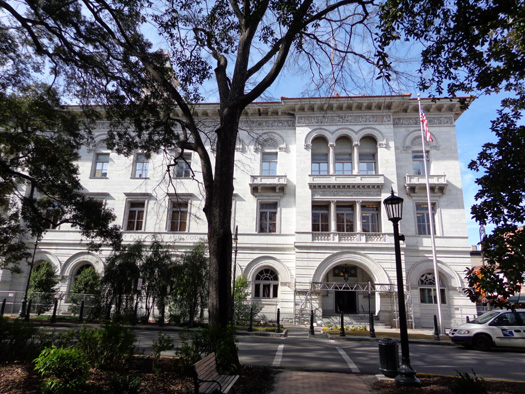
The building is named for Chief Tomochichi, the Creek Indian leader who
befriended the early Georgia colonists in the 1730s. There is also a
statue in his honor in one of the nearby public squares.
The imposing city hall, built in 1906 at the head of Bull Street, has a dome
covered in 23-carat gold leaf mined in Dahlonega, Georgia:
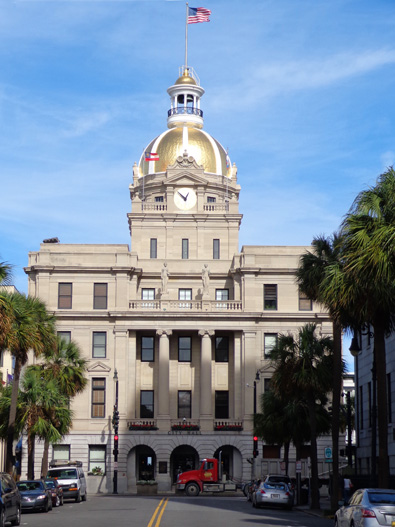
The Telfair Academy of Arts and Sciences, also designed by young
architect William Jay, is part of a tour package including the
Owens-Thomas House Museum and Jepson Center, another art museum:
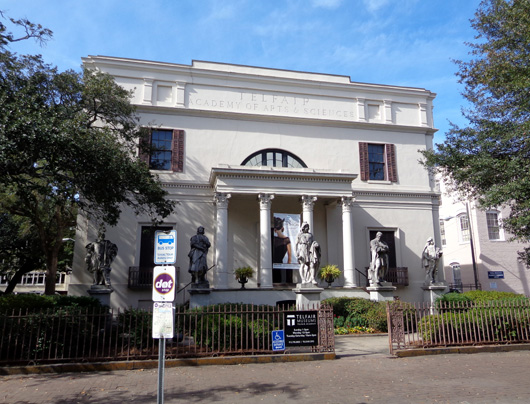
Telfair Academy of Arts & Sciences
Savannah is full of churches, some quite large.
The most photogenic we found is the Cathedral of St. John the Baptist, a
Catholic church. Founded in the late 1700s in a small wooden building,
the current structure was completed in 1876. A devastating fire in 1898
destroyed much of the building. It was rebuilt but the extensive
interior artwork was not completely finished until 1912.
Like many other historic
buildings in Savannah we've seen, the exterior is covered with
scaffolding for refurbishing work this winter:
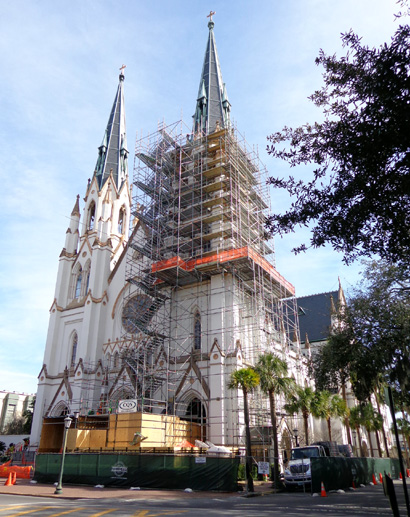
The church was open so I took a peek inside the sanctuary. I figured it
would be pretty snazzy but I was surprised by how elaborate it was.
Since several folks were praying I stayed in the back and tried to be
discreet as I took some photos of the elaborate interior:
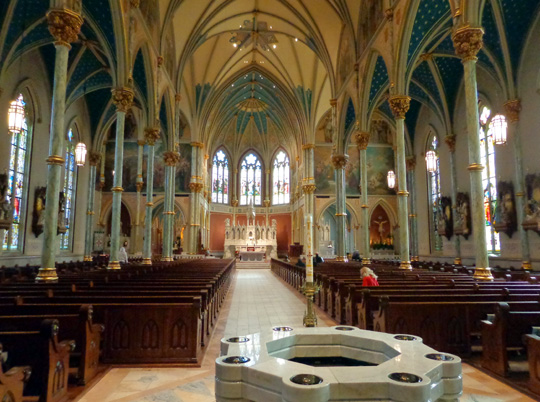
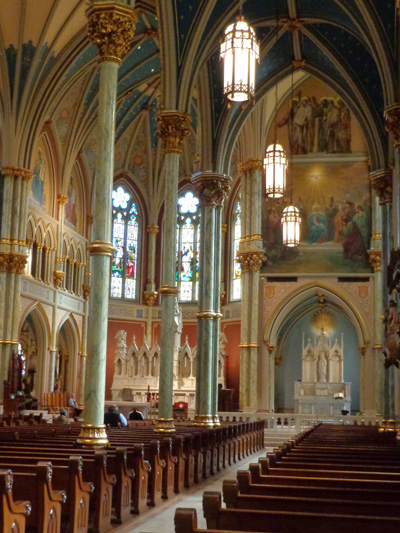
There are so many detailed, colorful stained
glass windows, murals, statues, decorations, and architectural details I
don't know how any first-time visitors can take it all in -- or
how they'd be able to concentrate on what the priest is saying during a
worship service!
THE FAMOUS PIRATES' HOUSE
One of the oldest buildings -- with some
of the most colorful history -- in Savannah is the iconic
Pirates' House, which is now a restaurant. You don't have to eat a meal
there to tour the place for free but the food is a good enough value
that you may as well have lunch or dinner there when you're exploring
all the interesting rooms inside.
It's been several decades since I ate here. It's
one of my fondest memories of Savannah and I wanted to share it with Jim
so we had lunch there one day.
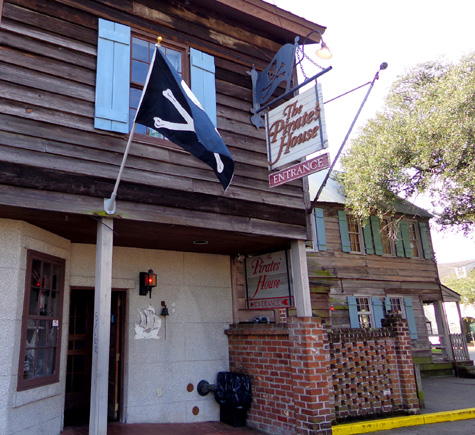
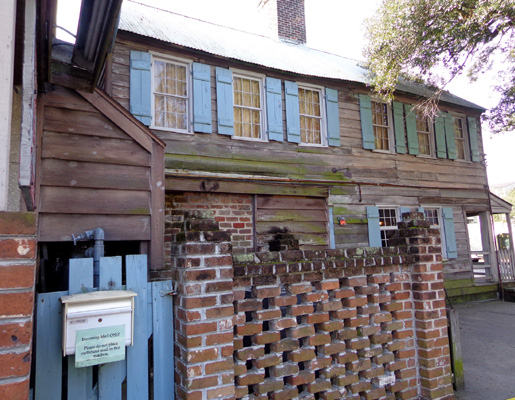
The Pirates' House was first opened in 1753 as
an inn for seafarers, including some legendary pirates. Stories abound
about the exotic high seas adventures these sailors had from their
travels around the world.
One of the legends it that a tunnel extended from the
old rum cellar beneath the Captain's Room. The tunnel led to the river.
Some drunken
men were supposedly carried away unconscious to ships and awoke to find
themselves bound for a port on the other side of the globe:
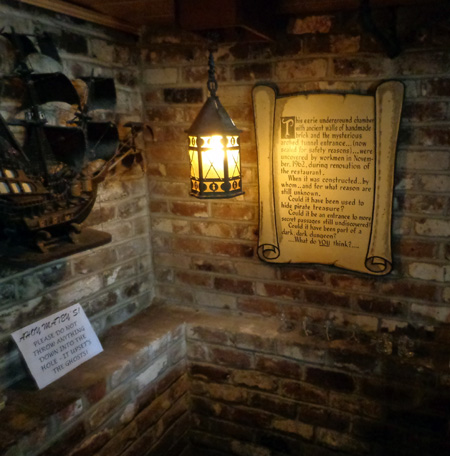
Entrance to
the tunnel, which is closed off to visitors
The Pirates' House is located near the Savannah
waterfront in Trustee's Garden, named in honor of General Oglethorpe's men.
The Herb House, now located inside the Pirates'
House complex, was built in 1734 to house the gardener for
Trustee's Garden. It is said to be the oldest remaining house in Georgia.
Each of the fifteen separate dining rooms in the
current restaurant has a name and theme.
You can see original brick walls, hand-hewn beams with wooden pegs, and
heart pine flooring. Furnishings and dinnerware represent various
periods of time since the inn was built.
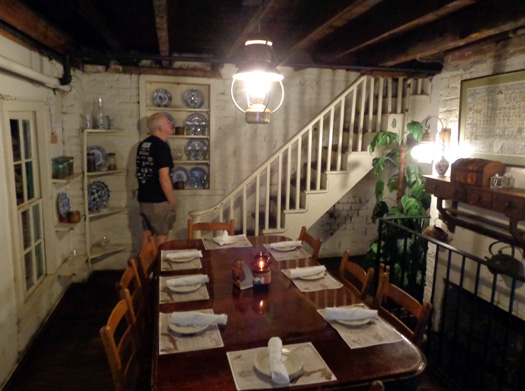
With the help of the friendly "pirate" on site,
we learned more about the original construction of the exterior of the
building, too:
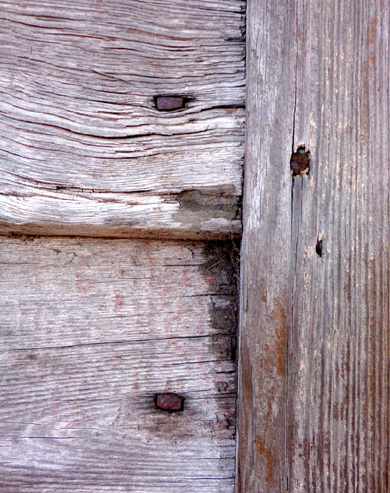
How often do
you see square or rectangular wooden nails?
Once of the famous people who enjoyed visiting
the Pirates' House is Robert Lewis Stevenson. He mentioned the inn
numerous times in his classic novel, Treasure Island.
I think Stevenson's visits were for real. It's
more difficult to verify some of the other stories about the
place.
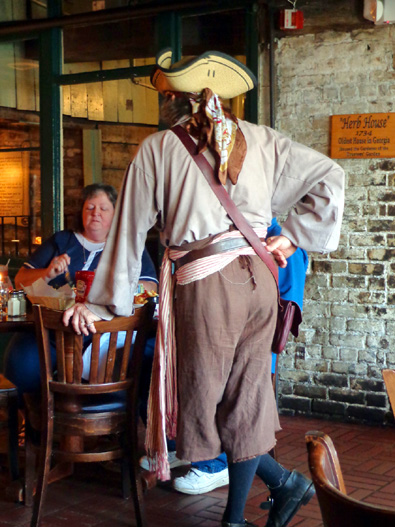
The host(?),
dressed as a pirate, greets all the diners
and loves to
tell about the history of the place.
Some of the hype surrounding the Pirates' House
is a bit hokey but it's a fun place to visit and we enjoyed our lunch
selections. Jim had traditional southern food from the buffet and I had
a tasty grilled salmon salad. While we were waiting for our meals to
come we wandered around all the dining rooms to see the architecture and
memorabilia.
MORE PHOTOS OF HISTORIC
SQUARES
It took several visits to take a close look at
all twenty-two of the original squares that remain in the Historic District.
The squares offer benches and a quiet place to
enjoy a walking tour of the area:
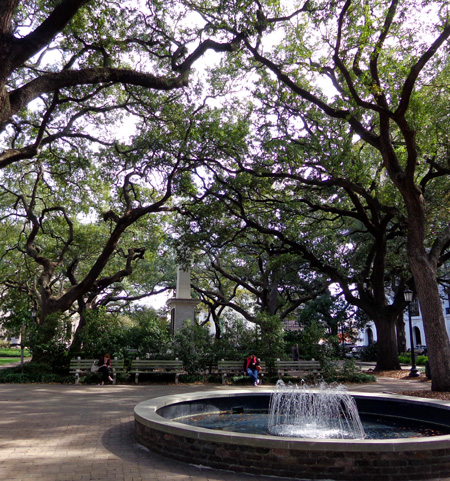
The monument in the background honors Major General
Nathaniel Greene
for his service to the American Revolution; it is in Johnson
Square.
All of the squares have lovely landscaping, including sprawling
old oak trees dripping with Spanish moss, and most have monuments or statues
to commemorate local historical figures.
Here are a few more of them:
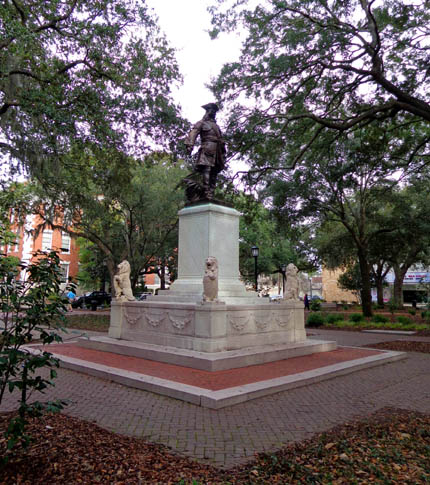
Statue of
Gen. James Oglethorpe, the founder of Savannah (Chippewa Square)
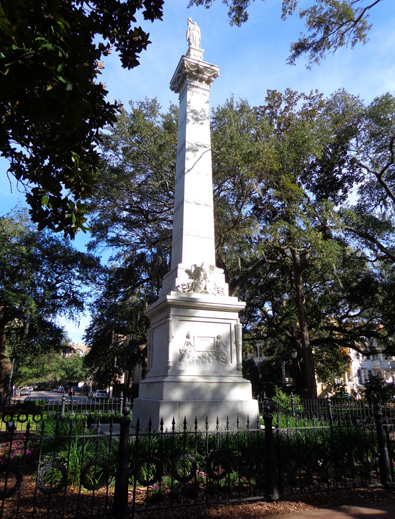
Monument to
Gen. Casimir Pulaski, who died fighting for American independence
In addition to Pulaski Square, Fort
Pulaski is also named for him. I'll show photos from the fort in another
entry.
I mentioned Chief Tomochichi above. He was the Creek
Indian chief who basically co-founded the colony of Georgia and the city
of Savannah with General Oglethorpe, helping with negotiations with
other Creek tribes and the Spanish.
Tomochichi was buried with full military honors in the middle of
Wright Square in 1739 at the age of 89, which is remarkable longevity
for that era:
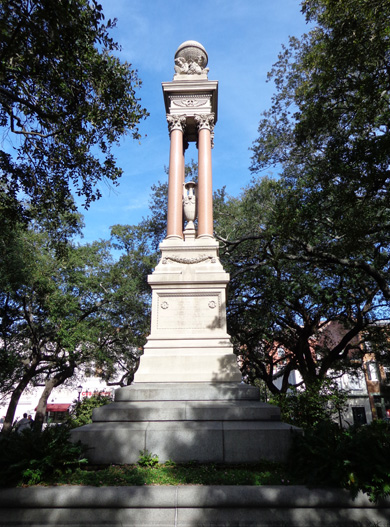
The monument over his grave is kind
of a two-fer, as it also honors William Gordon, the founder of Georgia's
first railroad.
FORSYTH PARK
Savannah has several larger public parks, too.
The one we liked the most is Forsyth Park,
located just south of the Historic District. Here are some photos of
this pretty park on a sunny January day:
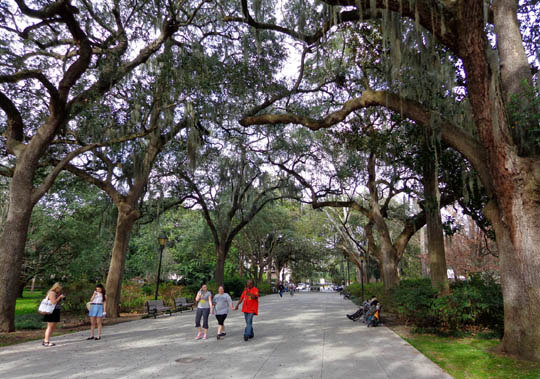
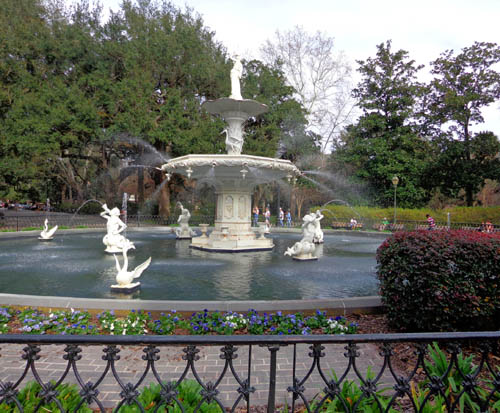
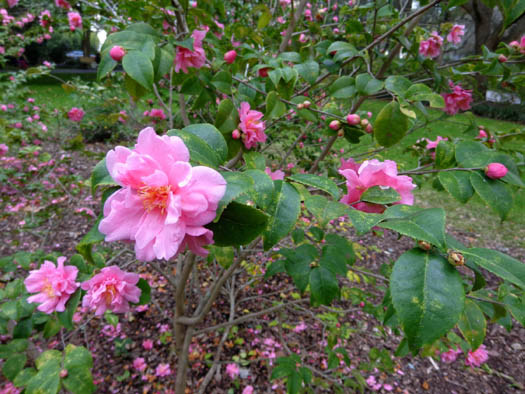
Rose-like
camellias bloom in winter in the South.
It looks more like spring than January, doesn't
it?
Continued on the next page: photos
of the historic waterfront and cemeteries
Happy trails,
Sue
"Runtrails & Company" - Sue Norwood, Jim O'Neil,
Cody the ultra Lab, and Casey-pup
Previous
Next
© 2013 Sue Norwood and Jim O'Neil